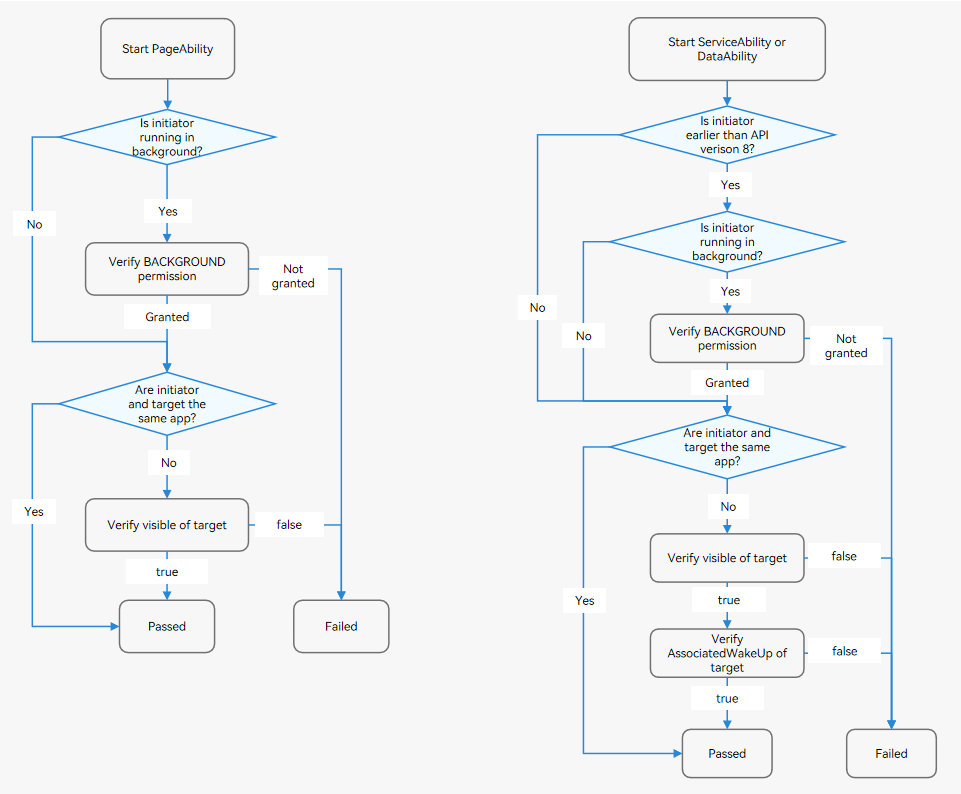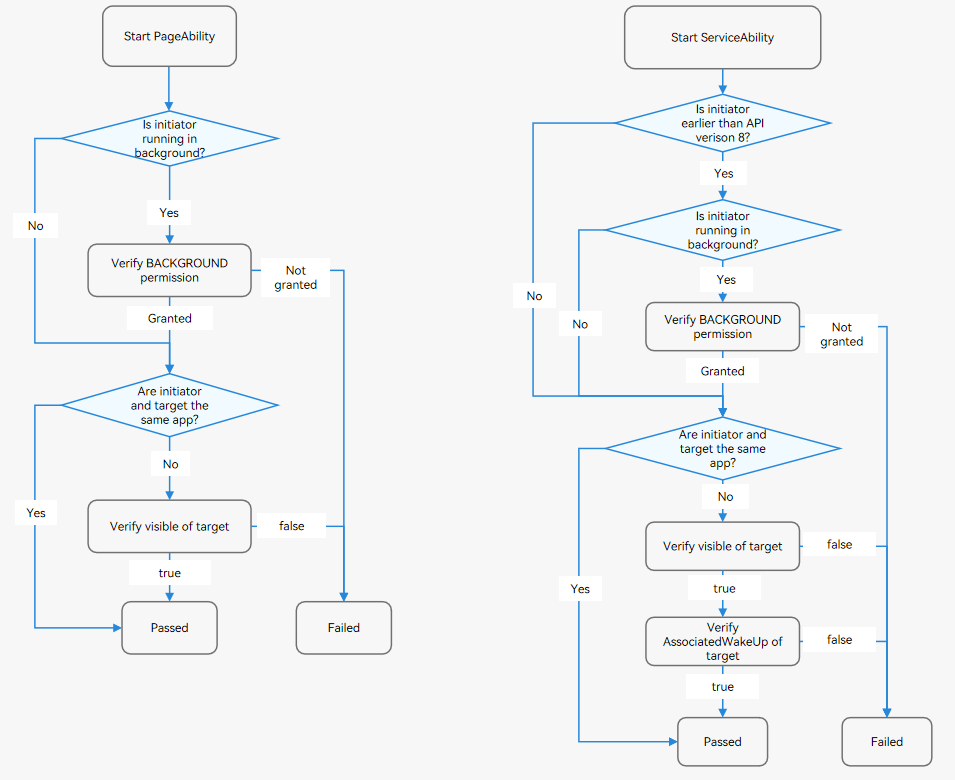harmony 鸿蒙Component Startup Rules (FA Model)
Component Startup Rules (FA Model)
Component startup refers to the behavior of starting or connecting to an application component.
Start the PageAbility and ServiceAbility. For example, you can use startAbility().
Connect to the ServiceAbility and DataAbility. For example, you can use connectAbility() and acquireDataAbilityHelper().
To deliver a better user experience, the system restricts the following behavior:
A background application randomly displays a dialog box, such as an ad pop-up.
Background applications wake up each other. This type of behavior occupies system resources and increases power consumption, or even causes system frozen.
A foreground application randomly redirects to another application, for example, redirecting to the payment page of another application. This type of behavior poses security risks.
In view of this, the system formulates a set of component startup rules, as follows:
Before starting a component of another application, verify the visible field of the target component.
- This rule applies only to cross-application scenarios.
- If the visible field of the target component is false, verify the ohos.permission.START_INVISIBLE_ABILITY permission, which is available only for system applications.
- For details about the visible field, see Internal Structure of the abilities Attribute.
Before starting a component of a background application, verify the BACKGROUND permission. > NOTE > > Applications developed using the SDK of API version 8 or earlier are not restricted by this restriction when starting the ServiceAbility or DataAbility.
- An application is considered as a foreground application only when the application process gains focus or its UIAbility component is running in the foreground.
- Verify the ohos.permission.START_ABILITIES_FROM_BACKGROUND permission, which is available only for system applications.
Before starting the ServiceAbility or DataAbility component of an application, verify the AssociateWakeUp field of the target application.
- This rule applies only to cross-application scenarios.
- This rule is valid only when the target component is ServiceAbility or DataAbility.
- The ServiceAbility and DataAbility of an application can be accessed by other applications only when AssociateWakeUp of the target application is set to true.
- The AssociateWakeUp field can be configured only for preset applications. For other applications, this field is set to false by default.
NOTE 1. Component startup control has been implemented since v3.2 Release.
- The new component startup rules are more strict than the original ones. Get familiar with the new startup rules to prevent service exceptions.
Intra-Device Component Startup Rules
The rules for starting components on the same device vary in the following scenarios:
Starting a PageAbility
Starting a ServiceAbility or DataAbility

Inter-Device Component Startup Rules
The rules for starting components on a different device vary in the following scenarios:
Starting a PageAbility
Starting a ServiceAbility

你可能感兴趣的鸿蒙文章
harmony 鸿蒙Obtaining Reasons for Abnormal Application Exits
harmony 鸿蒙UIAbility Backup and Restore
harmony 鸿蒙Using Explicit Want to Start an Application Component
harmony 鸿蒙Introduction to Ability Kit
harmony 鸿蒙AbilityStage Component Container
harmony 鸿蒙Accessing a DataAbility
harmony 鸿蒙Accessing a DataShareExtensionAbility from the FA Model
harmony 鸿蒙Common action and entities Values (Not Recommended)
- 所属分类: 后端技术
- 本文标签: